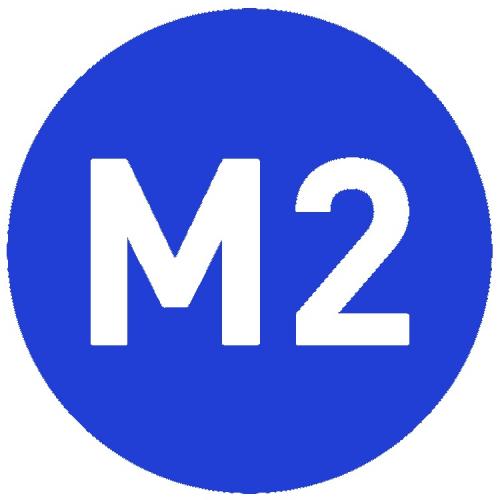Chapter 1 - What is a computer program?

If you are a complete novice to computers, you will find the information in this chapter useful. If you have some experience in computer use, and especially programming, you can completely ignore this chapter. It will deal with a few of the most fundamental topics of computers and will have nothing to do with the Modula-2 programming language.
WHAT IS A COMPUTER PROGRAM?
A computer is nothing but a very dumb machine that has the ability to perform mathematical operations very rapidly and very accurately, but it can do nothing without the aid of a program written by a human being. Moreover, if the human being writes a program that turns good data into garbage, the computer will very obediently, and very rapidly turn good data into garbage. It is possible to write a large program with one small error that will do just that. In some cases the error will be obvious, but if the error is subtle, the answers may appear to be right, and the error will go unnoticed. It is up to you, the human programmer, to write a correct program to tell the computer what to do. You can think of the computer as your very obedient slave ready to do your every whim. It is up to you to tell your slave what you want it to do.
A computer program is a "recipe" which the computer will use on the input data to derive the desired output data. It is similar to the recipe for baking a cake. The input data is comparable to the ingredients, including the heat supplied by the oven. The program is comparable to the recipe instructions to mix, stir, wait, heat, cool, and all other possible operations on the ingredients. The output of the computer program can be compared to the final cake sitting on the counter ready to be cut and served. A computer then is composed of two parts, the data upon which the program operates, and the data. The data and program are inseparable as implied by the last sentence.
WHAT ARE CONSTANTS?
Nearly any computer program requires some numbers that never change throughout the program. They can be defined once and used as often as needed during the operation of the program. To return to the recipe analogy, once you have defined how big a tablespoon is, you can use the same tablespoon without regard to what you are measuring with it. When writing a computer program, you can define the value of PI = 3.141592, and continue to use it wherever it makes sense knowing that it is available, and correct.
WHAT ARE VARIABLES?
In addition to constants, nearly any computer program uses some numbers that change in value throughout the program. They can be defined as variables, then changed to any values that make sense to the proper operation of the program. An example would be the number of eggs in the above recipe. If a single layer of cake required 2 eggs, then a triple layer cake would require 6 eggs. The number of eggs would therefore be a variable.
HOW DO WE DEFINE CONSTANTS OR VARIABLES?
All constants and variables have a name and a value. In the last example, the name of the variable was "eggs", and the value was either 2 or 6 depending on when we looked at the stored value. In a computer program the constants and variables are given names in much the same manner, after which they can store any value within the defined range. Any computer language has a means by which constants and variables can be first named, then assigned a value. The means of doing this in Modula-2 will be given throughout the remainder of this tutorial.
WHAT IS SO GOOD ABOUT MODULA-2?
Some computer languages allow the programmer to define constants and variables in a very haphazard manner and then combine data in an even more haphazard manner. For example, if you added the number of eggs, in the above recipe, to the number of cups of flour, you would arrive at a valid mathematical addition, but a totally meaningless number. Some programming languages would allow you to do just such an addition and obediently print out the meaningless answer. Since Modula-2 requires you to set up your constants and variables in a very precise manner, the possibility of such a meaningless answer in minimized. A well written Modula-2 program has many cross checks to minimize the possibility of a completely scrambled and meaningless output.
Notice however, in the last statement, that a "well written" Modula-2 program was under discussion. It is still up to the programmer to define the data structure in such a way that the program can prevent garbage generation. In the end, the program will be no better than the analysis that went into the program design.
If you are a novice programmer, do not be intimidated by any of the above statements. Modula-2 is a well designed tool that has been used successfully by many computer novices and professionals. With these few warnings, you are ready to begin.


















